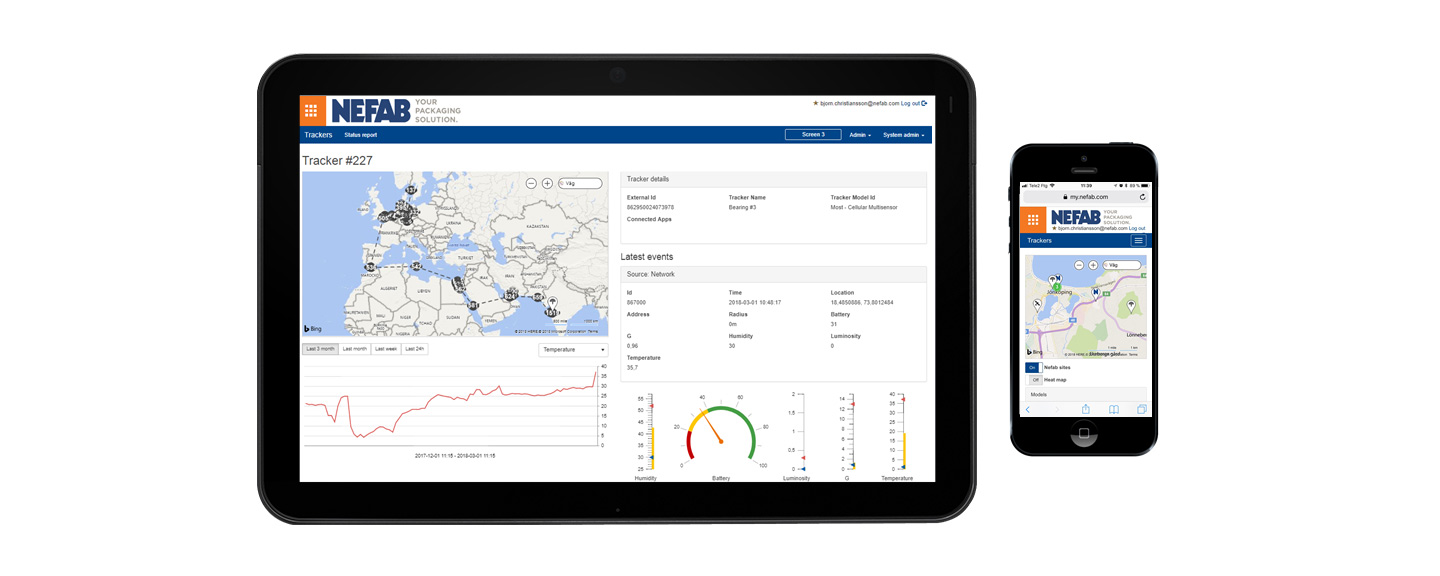How it Works and its Benefits for You
Tracking of packages can play a key role to ensure that everything departs, arrives at the correct locations and in the correct condition. In the past, this was a very hands-on process that could involve human error. Today, innovative technology has removed much of the manual work from the process, reducing errors, increasing efficiency and visibility.
Traditional Tracking Methods
The oldest type of package tracking included making a handwritten list of the packages and sending a bill of lading to the next location. Technology quickly moved to improve this process by the creation of barcodes and barcode scanners. For this to work, every package had to have a unique barcode placed on it, and that code had to be scanned every time the package departed or arrived at a transportation hub.
Unfortunately, the downside was that sometimes a package didn't get scanned correctly. This could be due to a missed scanning, not having access to the right system, or the barcode may not be completely readable for some reason. Also scanning is usually made in a local system, meaning the sender does not know when it was scanned in the receiving end. The result could be that the computer system lost track of the package – due to lack of end to end visibility.
Automating the Process
RFID scanners came next. These scanners involved using a special type of tracking device that was placed on each package. When that device passed by a scanner, it was automatically scanned. The package's location was automatically updated in the tracking system.
This process removed many of the errors from tracking since no one had to actually scan the RFID code. However, if many locations were involved it quickly became expensive. Every warehouse, station, and other stop along the way had to have RFID scanners. Otherwise, the transportation chain would be broken. At best, the next stop along the way would have an RFID scanner system in place to update tracking. At worst, you would lose track of your package. In any case you only know the locations of the last scanning, not what happens in between.
Innovative Smart Packaging

conditions around the packaging, such as light, temperature, humidity, speed, altitude, and shock to detect if the package has been shaken, dropped, tilted or tampered with
The newest type of packaging is smart packaging. This technology is able to send information back in real time. Packages can monitored as they are in transit, offering visability of where they are at any given moment. But smart packaging does much more than that. It may also include sensors providing information about the conditions around the packaging, such as light, temperature, humidity, speed, altitude, and shock to detect if the package has been shaken, dropped, tilted or tampered with. This can be extremely useful for transporting products that are more sensitive to its surroundings.
This type of tracking system is considered to be connected or active. It actively transmits its information regardless of whether or not it's being scanned.
How it Works
Passive tracking differs from connected packaging in the sense that it is non-real time, and relies on barcode readers, QR code readers and RFID readers. This equipment needs to be installed or available at the at the point of origin, point of delivery, warehouses, and other stops along the way. The package itself has very little technology on it (even if there is active RFID).
Smart packaging, on the other hand, makes use of cell phone networks or IoT networks like Sigfox and NB-IoT to transmit information about the packaging continuously, as it travels throughout the supply chain. And there is no need for the various warehouses, stations, ports, or other locations to add or upgrade any technology.
It’s Easy Until It’s Not
If everything comes together correctly, smart packaging is one of the quickest and easiest ways of tracking shipments. It is possible to see everything that happens along the way, so its easier to know if a package has been damaged or if it's gone missing. Everything is done automatically, and there's very little room for human error.
Unfortunately, there is still no global IoT network available that enables seamless tracking, even if coverage is improving day by day. When trackers encounter networks that are not compatible, or when packages are shipped through areas with no coverage, things get a bit more complicated. In some cases, such as when an area is only covered by one network that isn't reliable, there may be little to be done to correct the issue. However a smart packaging can remember what happened in the dead spots and report back as soon as its online again.
How Nefab Is Incorporating Tracking for its Customers

solutions are built on multiple technologies depending on needs and new upcoming technologies
Nefab is working on bringing smart tracking into our packaging solutions. Various pilot programs are exploring how this type of technology can be incorporated into our current packaging solutions, in order to provide additional value for our customers.
Based on our experiences, we don’t believe that there is one single technology that can serve all customer needs. Instead, solutions shall be tailored to individual customer needs, and also take upcoming technologies into the equation. For example, aspects like potential e-waste and cost efficiency also needs to be taken into consideration. This means that solutions for connected packaging often have to combine Sigfox and cellular technologies with, for example Bluetooth and RFID. Therefore, we have developed a platform that can incorporate data from barcodes, RFID and various networks and smart devices, to ensure that packaging can be monitored and tracked from one single place, regardless of what technology is being used.
Want to know more? Contact us today to discuss how our tracking system can help you.
